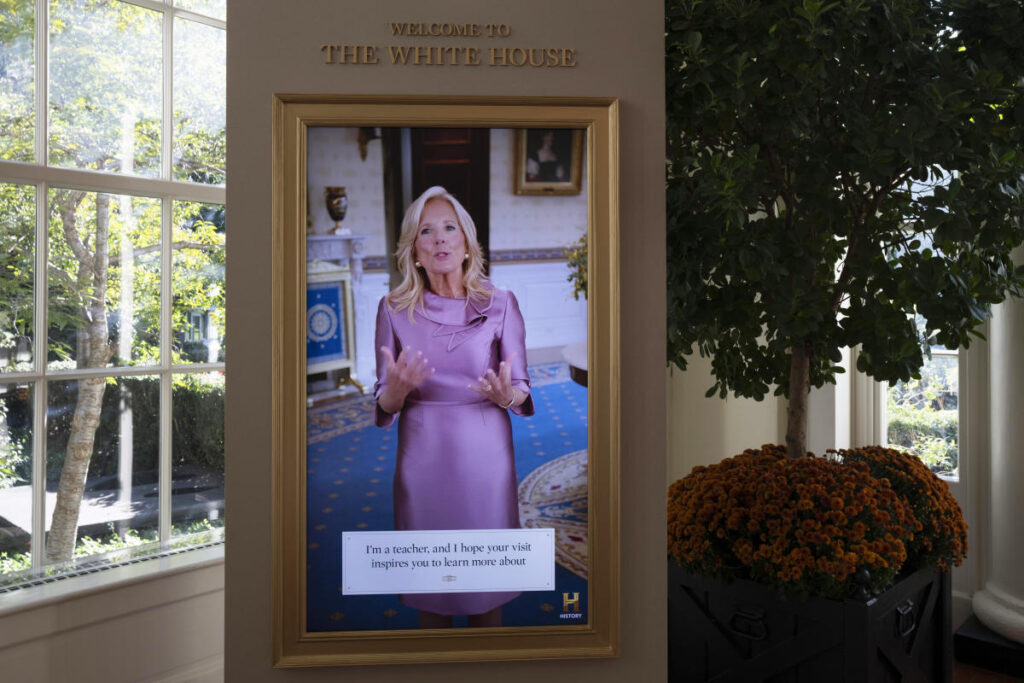Jill Biden, leveraging her experience as an educator, has implemented significant updates to the White House public tour, aiming to enhance visitors’ learning about the mansion’s historical significance. On Monday, she unveiled the redesigned tour, which includes newly accessible areas such as the Diplomatic Reception Room. This room, which has historically been restricted to the public, holds particular importance as it served as a venue for President Franklin D. Roosevelt’s “fireside chats.” Visitors will now have the opportunity to experience snippets of these audio conversations firsthand, adding a new auditory dimension to the tour.
In addition to the Diplomatic Reception Room, the redesigned tour will allow visitors to explore several other ground-floor rooms that were previously closed off. Key areas now accessible include the library, the China Room—home to presidential place settings—and the Vermeil Room, which contains an exquisite collection of tableware. The tour will also encompass the East Room and the State Dining Room located on the floor above. These changes reflect a broader commitment to making the White House more inclusive and educational for all visitors, fostering deeper engagement with its rich history.
Responding to the diverse learning styles of visitors, Jill Biden incorporated interactive elements into the tour. Recognizing that people learn in different ways—visually, auditorily, and tactilely—she emphasized the importance of creating an engaging experience. The tour now features new digital displays that replace traditional printed signs outside of rooms, allowing for a more dynamic and sensory-rich encounter with the artifacts and stories of the White House. This modernization not only reflects a shift in educational approaches but also aims to invigorate visitors’ interest in American history.
During a dinner hosted by the Bidens to celebrate the updated tour, Jill Biden expressed her vision for the enhancements, noting that it had been decades since the previous version was revised. She personally walked the tour route, identifying opportunities to enrich the experience by making it more informative and interactive. With a commitment to education being central to her mission, she highlighted how the restructured tour enables visitors to engage comprehensively with their history, fostering a sense of connection and understanding.
As part of the visitor experience, an innovative welcome awaits attendees starting from the East Wing. Jill Biden greets guests through a video introduction, while President Biden shares insights about the East Room’s storied past. This initiative allows future presidents and their spouses to introduce their personalized messages, ensuring a continuity of engagement with visitors across different administrations. The updates also include digitally managed collages of historical photos, which provide remarkable flexibility and allow for regular updates to the displayed content.
Collaboration has been key to the success of the reimagined tour, with the First Lady’s office partnering with various organizations. Over the past two years, they have worked closely with the National Park Service, the White House Curator’s office, the White House Historical Association, presidential libraries, and even the History Channel. One of the standout features is a 3D vertical model of the White House campus, which illustrates the significant architectural developments that have taken place over its 200-plus years of history. The comprehensive approach to the tour embodies a significant evolution in how the public engages with the White House, fostering an appreciation for the historical insights and narrative that the residence holds.

